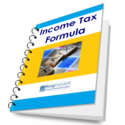Provident Fund (PF) and Voluntary PF (VPF) are two investment avenues that most salaried people invariably encounter. This article explains what PF is, and also talks about Voluntary Contributions to the PF account. Here’s how you can use PF and VPF to create a great base for a great retirement.
If you are salaried, there is no way you would have not heard of Provident Fund (PF). In fact, there is no way you would have not invested in it! Well, it is because PF is a compulsory investment for all salaried people (PF is compulsory if you work for a company having 20 or more employees)
Note: Provident Fund is also referred to as Employees Provident Fund, or EPF.
(Want to know about Public Provident Fund? Please read “Public Provident Fund (PPF) – Plan Your Retirement and Save Tax“)
Since you are forced by the government to invest in PF, let’s understand it better, and see how it can be so useful in building a retirement corpus for you.
What is Provident Fund (PF)?
PF is a long term investment. It is one of the lowest risk investment avenues, as it is backed by the government.
Each month, a certain percentage of your salary (usually, a percentage of your Basic Pay) is invested in it. This percentage varies from company to company, and is usually between 8% and 12%. (12% is the norm).
PF, Income Tax (IT) and the double benefit
Your contribution towards PF is considered as a part of investments under Section 80C of the Income Tax (IT) Act. Thus, this amount gets deducted from your salary, and you do not pay any tax on it!
(Want to know more about Section 80C and investments that make a part of it? Please read “Saving Income Tax – Understanding Section 80C Deductions”)
Moreover, the company you work for contributes an equal amount to your PF account on your behalf.
And that’s the best part – it’s not just you making the investment: the company makes an equal investment for your retirement! Isn’t that great? It’s free money, after all!
(Well not totally free – for those of you working for private companies, the company’s contribution to PF would be part of the cost to company – CTC – salary computation).
Interest Rate for PF
The rate of interest that you earn on your PF investment is fixed by the Central Government every year in March / April. The rate of interest changes every year, but due to the nature of politics in India, it is usually higher than the prevailing market rates.
The current rate of interest on PF (for FY 2010-11) is 9.5% (now you know what I mean when I say it is usually higher than the prevailing market rates!)
How do you get your money back?
PF is a long term investment, and it is meant to give you a sizable lump-sum amount at the time of your retirement. Thus, you get your PF money back at the time of your retirement.
(Note: There are other ways in which you can get your PF money back, like taking a loan from your provident fund account. But it is not prudent to use your retirement savings for anything other than retirement – so I have not talked about those avenues here)
(Please go to the bottom of the page to download forms to transfer or withdraw your PF money)
Income tax benefit – a recap
The amount you have invested, the amount that your company has invested on your behalf and the interest earned on these amounts. Tax-free.
Yes, tax free! There is absolutely no income tax on provident fund money withdrawn at the time of retirement.
Summing Up
I am sure you see the benefits of PF now:
- Immediate income tax (IT) benefit under Sec 80C
- Equal contribution by your company
- Interest rate usually higher than prevailing market rate
- Totally tax free returns
Can it get better than this?? No – not for people seeking long term, risk free avenues of investment.
Example
Let’s see an illustration to demonstrate the power of provident fund.
Let’s say you are just starting out. Your working life is, say, 35 years. You start with a basic salary of Rs. 10,000. Every year, on an average, you get a 5% increment. Also, you get a promotion every 5 years, and get a pay hike of 20% when you get promoted.
You contribute 12% of your basic salary towards PF (which is matched equally by your company).
{filelink=18} Want to know the figures for your exact situation? Download this spreadsheet that has all the detailed calculations for the PF illustration. You can change the parameters to suit your need, and find out the exact amount that you can expect from your EPF account when you retire.
In this case, over the course of 35 years of your working life, you make a total contribution of Rs. 22.64 Lakhs.
(Remember, I haven’t considered the Sec 80C income tax benefit in these calculations – if your entire amount is eligible for 80C deduction, and you are in the highest tax bracket, you would have saved 30% of your investment every year. This means that your actual investment would only be Rs. 15.85 Lakhs!)
Of course, your company makes an equal contribution of Rs. 22.64 Lakhs.
And this amount grows into – hold your breath – Rs. 1.5 Crores at the time of your retirement! Now, that’s a good amount for your retirement corpus!! This amount can serve as a solid base for your retirement, especially because it is virtually risk free.
Other Options
You should plan on investing more in other avenues to get the actual amount you need for your retirement.
(Want to know how much you would need when you retire? Please read “Want to retire early? Here’s what you need”)
One option is to make voluntary contributions to the same PF account. (This is discussed later in the article).
But if want to invest smartly, you should invest in stocks for retirement. This is because stocks give the best return on your investment in the long term. (Please read “Stocks – The winning bet for the long term” to know more about long term investment in stocks).
So, for a long term goal like retirement, you should definitely invest a good portion of your savings in stocks. To know how to invest small amounts periodically to achieve large long term goals, please read “Goal Based Investing”.
Other things you should know about Employees Provident Fund / EPF / PF
- The PF balance can be transferred when you change jobs (You can download the relevant form at the end of this article)
- You can define a nominee for your PF account
- You get an annual statement of your PF balance
{filelink=18} Want to know the figures for your exact situation? Download this spreadsheet that has all the detailed calculations for the PF illustration. You can change the parameters to suit your need, and find out the exact amount that you can expect from your EPF account when you retire.
Voluntary Contributions to Provident Fund (VPF)
Now, if you are very risk averse and want a safe option like PF, voluntary contributions to PF, or VPF, is the way to go.
It’s simple: You contribute more towards your PF, over and above the 12% mandated by the government.
This additional voluntary contribution enjoys all the benefits of PF, except that the company doesn’t contribute an equal amount.
But still, the interest rate is equal to the rate of interest for PF, and the withdrawal on retirement is tax-free.
Thus, as I said earlier, VPF can be a good option if you are very risk averse and want a safe option like PF.
Please note that the maximum contribution allowed towards VPF is 100% of your basic + dearness allowance (DA).
Download Forms to Transfer or Withdraw PF Money
(You need to be logged-in to download the forms. For free registration that takes less than a minute, please click here. To know the benefits of registration, please click here)
| Form No. | Purpose | Download Link |
| Form 13 (Revised) | To transfer the Provident Fund account from one establishment to another establishment. | {filelink=66} |
| Form 19 | To withdraw Provident Fund dues on leaving service / retirement / termination. That is, to claim final settlement of PF. | {filelink=65} |
| Form 20 | To claim a member’s Provident Fund accumulation in the event of death of the member. This form is to be used by a nominee / family member. | {filelink=64} |
| Form 31 | To avail advances / withdrawals as provided in the scheme. (Note: PF is for long term savings. As far as possible, do not withdraw from it before retirement) | {filelink=63} |





